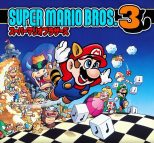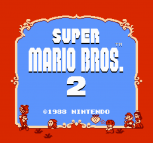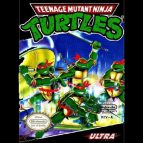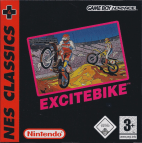
The Nintendo Entertainment System (NES), released in the early 1980s, is a pivotal cornerstone in the annals of video game history. Initially introduced in Japan as the Family Computer (Famicom), it was rebranded for the international market as the NES and launched in North America in 1985, Europe, and other regions shortly after. Its arrival marked a watershed moment, rejuvenating the video game industry after the crash of 1983, which had left the market saturated with low-quality games and consoles.
The NES’s importance extends beyond merely pulling the industry from the brink; it fundamentally transformed the landscape of gaming. It introduced a standard for hardware and game development that set the tone for future generations. The system’s robust build, paired with a controlled approach to game publication, ensured a consistent level of quality that had been missing in the industry. This was partly enforced through the NES’s 10NES lockout chip, a controversial yet effective method of curbing unauthorized game production.
| Rank | Game | Genre | Developer | Publisher | Platform | Release Date | Sales |
|---|---|---|---|---|---|---|---|
| 1 |  | Platformer | Nintendo R&D4 | Nintendo | Nintendo Entertainment System, arcade | September 13, 1985 | 40.24 million units |
| 2 |  | Light gun shooter, sports, shooting gallery | Nintendo Research & Development 1 (R&D1) | Nintendo | Nintendo Entertainment System, arcade | April 21, 1984 | 28.31 million units |
| 3 |  | Platformer | Nintendo R&D4 | Nintendo | Nintendo Entertainment System, arcade, Game Boy Advance | October 23, 1988 | 17.28 million units |
| 4 |  | Platformer | Nintendo R&D4 | Nintendo | Nintendo Entertainment System, Super Nintendo Entertainment System, Game Boy Advance | September 1988 | 7.46 million units |
| 5 |  | Action-Adventure | Nintendo R&D4 | Nintendo | Family Computer Disk System, Nintendo Entertainment System, Game Boy Advance, GameCube | February 21, 1986 | 6.51 million units |
| 6 |  | Puzzle | Nintendo R&D1 | Nintendo | Nintendo Entertainment System | November 1989 | 5.58 million units |
| 7 |  | Puzzle | Nintendo R&D1 | Nintendo | NES, Arcade, Game Boy, SNES, Game Boy Advance | July 27, 1990 | 4.85 million units |
| 8 |  | Action RPG/Platformer | Nintendo R&D4 | Nintendo | Famicom Disk System, Nintendo Entertainment System, GameCube, Game Boy Advance | January 14, 1987 | 4.38 million units |
| 9 |  | Action, Platformer | Konami | Konami | Nintendo Entertainment System, Amiga, Amstrad CPC, Atari ST, Commodore 64, MS-DOS, MSX, ZX Spectrum, PlayChoice-10 | May 12, 1989 | 4.17 million units |
| 10 |  | Racing | Nintendo R&D1, Nintendo R&D4 | Nintendo | NES, Arcade, PC-88, X1, Famicom Disk System, Game Boy Advance, Nintendo 3DS | November 28, 1984 | 4.16 million units |
The console’s global impact cannot be overstated. It brought video games into the mainstream consciousness, transforming them from a niche hobby into a universal form of entertainment. The NES cultivated a generation of gamers and developers alike, inspiring countless individuals to explore the realms of game development and design.

Best Selling NES Games
1. Super Mario Bros.

Release Date: September 13, 1985
Genre: Platformer
Developer: Nintendo R&D4
With over 40.24 million units sold, “Super Mario Bros.” stands as a monumental title in the platformer genre, developed by Nintendo’s R&D4 team and led by the iconic Shigeru Miyamoto and Takashi Tezuka. Released on September 13, 1985, for the Nintendo Entertainment System (NES), this game set players on a captivating adventure through the Mushroom Kingdom. Players guide Mario, and in the game’s multiplayer mode, his brother Luigi, on a mission to rescue Princess Toadstool from the clutches of the nefarious Bowser. The game’s design is characterized by its intuitive running, jumping, and enemy-defeating mechanics across various imaginative levels, each brimming with challenges, secrets, and iconic power-ups like the Super Mushroom, the Fire Flower, and the Starman. Spanning eight worlds with four levels each, the journey culminates in thrilling castle levels where players face off against Bowser or his impostors. “Super Mario Bros.” is celebrated for its precise controls, innovative level designs, and memorable soundtrack by Koji Kondo, establishing foundational elements for the platforming genre and video games at large. Its overwhelming success not only helped revive the video game industry post-1983 crash but also cemented Nintendo’s position as a pivotal player in gaming, thereby propelling the Mario franchise into a global pop culture phenomenon.
2. Duck Hunt

Release Date: 1984 (Japan), 1985 (North America and Europe)
Genre: Light Gun Shooter
Developer: Nintendo Research & Development 1 (R&D1)
With 28.31 million units sold, “Duck Hunt” stands out as an iconic light gun shooter game that defined the early days of the Nintendo Entertainment System (NES). Developed by Nintendo’s R&D1 team and released in the mid-1980s, “Duck Hunt” brought to homes the unique experience of using the NES Zapper light gun to aim and shoot at ducks or clay pigeons displayed on the TV screen. The game features three main modes: shooting flying ducks in Game A, hitting clay pigeons in Game B, and a more challenging version of duck shooting with two birds on the screen at once in Game C. One of the game’s most memorable aspects is the dog companion, known for its mocking laughter whenever players miss their shots. This innovative use of peripheral technology not only provided an engaging and interactive gaming experience but also helped cement Nintendo’s legacy as a pioneer in creating fun, family-friendly, and technologically innovative games.
3. Super Mario Bros. 3

Release Date: October 23, 1988 (Japan), February 12, 1990 (North America)
Genre: Platformer
Developer: Nintendo R&D4
“Super Mario Bros. 3,” with sales reaching 17.28 million units, is a critically acclaimed platformer game that significantly expanded upon the formula established by its predecessors in the Super Mario series. Developed by Nintendo’s R&D4 and released in the late 1980s and early 1990s, this game introduced a plethora of innovative features and power-ups, such as the Super Leaf, which grants Mario the ability to fly, and the Frog Suit, enhancing his underwater capabilities. Set in the diverse lands of the Mushroom World, each with its distinct thematic elements, players navigate through a variety of levels that showcase creative design, challenging obstacles, and engaging gameplay mechanics. The game’s introduction of a map screen for selecting levels was a novel concept, adding an element of choice to the progression through the game’s worlds. “Super Mario Bros. 3” is celebrated for its intricate level design, imaginative power-ups, and its significant role in advancing the platforming genre, securing its place as one of the most influential and beloved video games in history.
4. Super Mario Bros. 2

Release Date: September 1988 (North America), October 10, 1988 (Europe), July 14, 1992 (Japan as “Super Mario USA”)
Genre: Platformer
Developer: Nintendo R&D4
With 7.46 million units sold, “Super Mario Bros. 2” is a unique and imaginative entry in the Super Mario series. Released by Nintendo’s R&D4 in the late 1980s, this game diverged from its predecessor’s traditional platforming elements, introducing a new style of gameplay that includes picking up and throwing objects and enemies, a mechanic not seen in the original. Players can choose from four characters: Mario, Luigi, Princess Peach, and Toad, each with distinct abilities that influence gameplay. Set in the dreamland of Subcon, the game tasks players with defeating the villain Wart, a stark departure from the series’ staple antagonist, Bowser. “Super Mario Bros. 2” is celebrated for its creativity, vibrant levels, and the introduction of several characters and elements that have become recurring staples in the series. Its distinct gameplay and style set it apart from other entries, making it a memorable and influential title in the NES library.
5. The Legend of Zelda

Release Date: February 21, 1986 (Japan), August 22, 1987 (North America), November 27, 1987 (Europe)
Genre: Action-Adventure
Developer: Nintendo R&D4
“The Legend of Zelda” stands as a pioneering title in the action-adventure genre, with sales surpassing 6.51 million units. Developed by Nintendo’s R&D4 and released in the mid-1980s, this game introduced players to the expansive world of Hyrule and its protagonist, Link, setting him on a quest to rescue Princess Zelda and battle the malevolent Ganon. Renowned for its open-ended exploration and innovative game design, “The Legend of Zelda” allowed players to traverse a vast, interconnected world with minimal restrictions, a revolutionary concept at the time. The game combined real-time action with puzzle-solving and exploration, laying the groundwork for future titles in the series and influencing countless other games in the genre. Its success spawned one of the most iconic and enduring franchises in video game history, with “The Legend of Zelda” being celebrated for its complexity, depth, and its pivotal role in shaping the action-adventure genre.
6. Tetris

Release Date: November 1989 (North America)
Genre: Puzzle
Developer: Nintendo R&D1
“Tetris,” the quintessential puzzle game, marked its indelible presence on the Nintendo Entertainment System (NES) with sales figures reaching 5.58 million units. Released by Nintendo in November 1989 for the North American market, this iteration of “Tetris” brought the globally acclaimed puzzle experience to home consoles, captivating players with its simple yet profoundly engaging gameplay. The objective is to rotate and arrange falling tetrominoes to complete horizontal lines, which then disappear, preventing the stack from reaching the top of the screen. Its easy-to-learn mechanics, coupled with increasing levels of difficulty, made “Tetris” an instant classic, appealing to a wide demographic of players. This version of “Tetris” for the NES is particularly notable for its role in popularizing the game in North America, contributing to the puzzle genre’s prominence in the gaming industry and solidifying “Tetris” as one of the most iconic and beloved video games of all time.
7. Dr. Mario

Release Date: July 27, 1990 (North America), October 4, 1990 (Japan), June 27, 1991 (Europe)
Genre: Puzzle
Developer: Nintendo R&D1
With 4.85 million units sold, “Dr. Mario” is a distinguished puzzle game that added a unique twist to the genre on the Nintendo Entertainment System (NES). Developed by Nintendo’s Research & Development 1 (R&D1) and released in the early 1990s, “Dr. Mario” features Mario in a new role as a doctor battling against a variety of viruses. The gameplay involves strategically dropping colored capsules onto a grid, aiming to align them with viruses of the same color to clear the board. The game is renowned for its challenging puzzles, iconic music, and the introduction of Dr. Mario as a recurring character in the Mario franchise. “Dr. Mario’s” innovative approach to the puzzle genre, combined with its engaging gameplay mechanics, has made it a beloved classic and a staple in the puzzle gaming landscape.
8. Zelda II: The Adventure of Link

Release Date: January 14, 1987 (Japan), December 1, 1988 (North America), September 26, 1988 (Europe)
Genre: Action RPG/Platformer
Developer: Nintendo R&D4
“Zelda II: The Adventure of Link” distinguished itself in the action RPG and platformer genres, achieving sales of 4.38 million units. As a sequel to the groundbreaking “The Legend of Zelda,” this title was developed by Nintendo’s R&D4 and released in the late 1980s. It took a bold departure from its predecessor by incorporating side-scrolling platforming elements and RPG mechanics such as experience points and a level-up system, set against the backdrop of a top-down overworld map. Players once again assume the role of Link, embarking on a quest to save Princess Zelda and the kingdom of Hyrule from a looming threat. “Zelda II” is notable for its challenging gameplay, complex dungeons, and the introduction of new abilities and mechanics that would influence future series entries. Despite its departure from the original’s formula, “Zelda II: The Adventure of Link” remains a beloved and influential title within the franchise, appreciated for its ambition and the unique place it holds in the Zelda series.
9. Teenage Mutant Ninja Turtles

Release Date: May 12, 1989 (North America), December 7, 1989 (Japan), August 17, 1990 (Europe)
Genre: Action, Platformer
Developer: Konami
“Teenage Mutant Ninja Turtles” (TMNT) for the Nintendo Entertainment System (NES) is an action-platformer game that sold 4.17 million units, making it one of the most popular titles on the platform. Developed by Konami and released in 1989, the game allowed players to control the four iconic Ninja Turtles—Leonardo, Michelangelo, Donatello, and Raphael—each equipped with their unique weapons and abilities. Set in New York City, players embark on a mission to rescue Splinter and April O’Neil from the clutches of the evil Shredder and his Foot Clan. The game is renowned for its challenging levels, varied gameplay mechanics, and faithful representation of the TMNT franchise. Its mix of side-scrolling action and top-down level navigation, along with memorable boss battles, made “Teenage Mutant Ninja Turtles” a defining game of its era and a cherished part of the NES library.
10. Excitebike

Release Date: November 28, 1984 (Japan), October 18, 1985 (North America), September 1, 1986 (Europe)
Genre: Racing
Developer: Nintendo R&D1, Nintendo R&D4
“Excitebike,” with sales totaling 4.16 million units, is a seminal racing game that captivated players on the Nintendo Entertainment System (NES). Developed by Nintendo’s Research & Development 1 (R&D1) and released in the mid-1980s, “Excitebike” allowed players to race motocross bikes across various tracks, each presenting its own set of obstacles and challenges. The game is distinguished by its side-scrolling perspective, innovative track design, and the ability for players to create their own custom tracks, a feature that was ahead of its time. Players must navigate jumps, hazards, and other racers, all while managing their bike’s temperature to avoid overheating. “Excitebike’s” blend of racing action, strategic gameplay, and creative freedom contributed to its lasting appeal, making it a beloved classic and an enduring example of Nintendo’s early innovation in video game design.
Titans of the NES
The best-selling NES games, led by iconic titles like “Super Mario Bros.” and “The Legend of Zelda,” not only exemplify the NES’s monumental impact on gaming but also highlight its role in revitalizing the industry post-1983. These games, with their innovative gameplay and engaging narratives, set new benchmarks in video gaming, contributing to Nintendo’s enduring legacy as a pioneer. The remarkable sales figures of these classics reflect their timeless appeal and the fond memories they hold for players worldwide. As we reflect on these sales-ranked titans, their influence extends beyond numbers, shaping the foundation of modern gaming and continuing to inspire both developers and gamers alike.
Wario's Woods holds the distinction of being the final officially-licensed NES game released in North America, marking the end of the console's era. It is also unique as the only NES game to receive a rating from the Entertainment Software Rating Board (ESRB), which was established just months before the game's launch.
The Nintendo Entertainment System, first launched in 1983, was discontinued in 1995 after selling approximately 61 million units. Nearly thirty years after the console was phased out, one developer is creating a new game for the NES, which will also be available for the Game Boy.
The high cost of NES games can be attributed to the basic principles of supply and demand, rather than any hidden agenda. With the production of the original console halted, the fixed supply coupled with increasing demand drives up prices for these vintage games.







